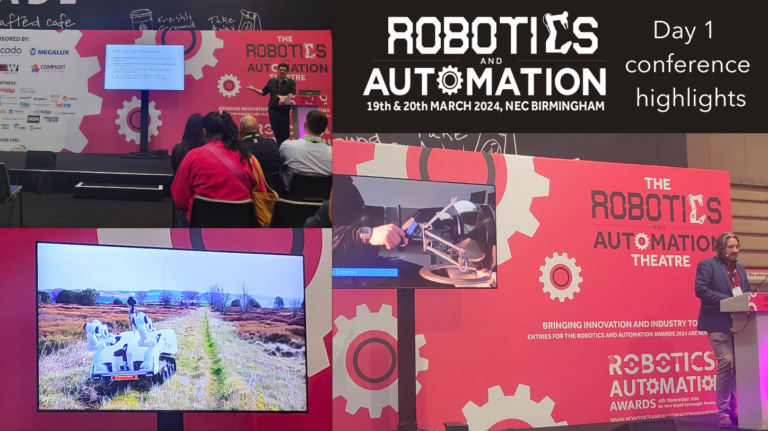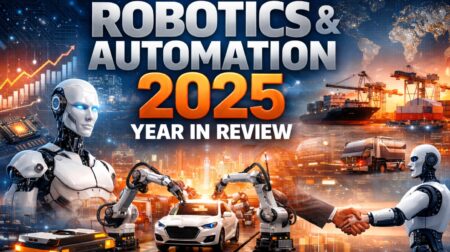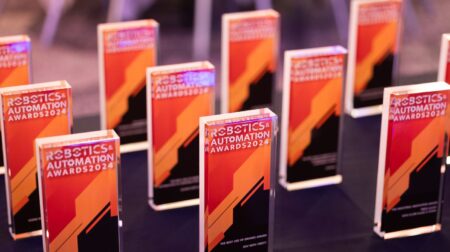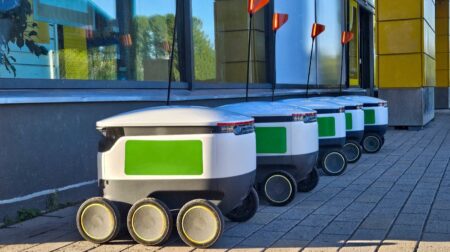The UK’s biggest dedicated exhibition for robotics and automated technologies will once again provide show attendees with a dedicated conference theatre, with Day 1’s range of expert speakers providing insight across several major industry areas, including…
Robotics and Automation 2024 Panel
Topic: AI – a threat to job security?
Speakers: Agnes Wagamui, knowledge transfer manager, Innovate UK; Simon Thorne, senior lecturer in computer science, Cardiff School of Technologies, Cardiff University; Gordon Baker, policy lead for robotics, UK Department of Science, Innovation & Technology; and Robbie Cato, automation specialist, Morrison’s
When: 19 March, 2:35pm
Session overview: As AI continues to develop rapidly and prove its worth in the automation and optimisation of long-winded processes, the technology is coming under increasing scrutiny due to its threat to job security across a large cross-section of industries. During this panel moderated by Robotics & Automation magazine editor Ursula O’Sullivan-Dale, panellists discussed comments made earlier this year by Christopher Pissarides on the need for creative careers amid the rise in AI, how AI can foster innovation and new opportunities as well as concerns over the ‘end of work’ from over-automation.
Session highlight: Medical telexistence technology for hazardous environments
David King from the University of Sheffield’s Advanced Manufacturing Centre (AMRC) delivered a presentation on the role of tele-operated robotics in responding to natural disasters and other hazardous environments. He offered an overview of key factors in response to incidents and how delay in emergency responses can lead to further risks and potentially greater loss of life, citing the incident of the Manchester bombing wherein responders were unsure if more bombs were in the area.
This can post a major hazard to any emergency responders attending casualties. He highlighted that the UK is marked as having a substantial threat level, meaning an attack is likely at any moment. Aside from terrorist incidents, other examples hazardous environment include natural disasters, wherein responders could be exposed to toxic gas, chemical spills, smoke and aftershocks.
All these environments have common attributes: multiple casualties, that the critically injured need urgent triage and that the hazardous environment poses risks to responders. On the role of tele-operated technology in addressing this, King said: “We can’t stop natural disasters, but we can control how we respond to them and have the opportunity to prevent further loss of human life. This was the journey into MediTel to develop technology to address these risks”.
In July 2022, AMRC applied to a contest hosted by the UK government’s Defence and Security Accelerator (DASA), which briefed applicants on the development of tech to enable telexistence using remote operation of robotics triage systems and treat them safely and remotely. In responde, AMRC developed a complete visual and audio telepresence system and turned its solution into something high-tech that could actually be trialled in suitable environment.
Getting into the technical details of how the equipment works, King explained that every robot movement is tracked in real time, and that AMRC has enabled motion-planning algorithms for automated task completion. It has also ensured collision avoidance systems are in place when the device is in bi-manual mode. As King explained, the system was refined several times during the initial 9-month brief period.
King described the teleoperation experience as “truly immersive” with “many vision systems and other sensors” and believes there is a lot more than can be done with the technology in the future. When the robot arrives at a casualty incident, it inters triage mode and its robotic arms are deployed so a remote paramedic can run through the triage sequence.
Next, the bot automatically picks up an auto-injector, which is done with automatic control, before handing back over to the remote operator, meaning the device is in manual control. Another tasknthe device is able to complete is blood pressure measurement, which the team were able to achieve using an off-the shelf blood measurement cuff.
In future, King believes drones could be used to develop a MediTel “System of Systems” with companion drones being deployed with the main robot, or even multiple systems being introduced for a large incident. The project has recieved further funding from DSTL to further improve the performance of operators of systems, King added.
Key topics this year:
- Robotics and Automation challenges in the aerospace industry
- Future proofing warehouses for the challenges of tomorrow
- Identifying processes to optimise the supply chain
- Economic factors and intralogistics advancements behind automation
- Development of protective medical robotics
- Government reaction to robotics and automation
- Who are Innovate UK?
- Laboratory automation synergy within logistics and and factory automation
- SME’s endeavours in the pursuit of net zero
- The limits of generative AI









